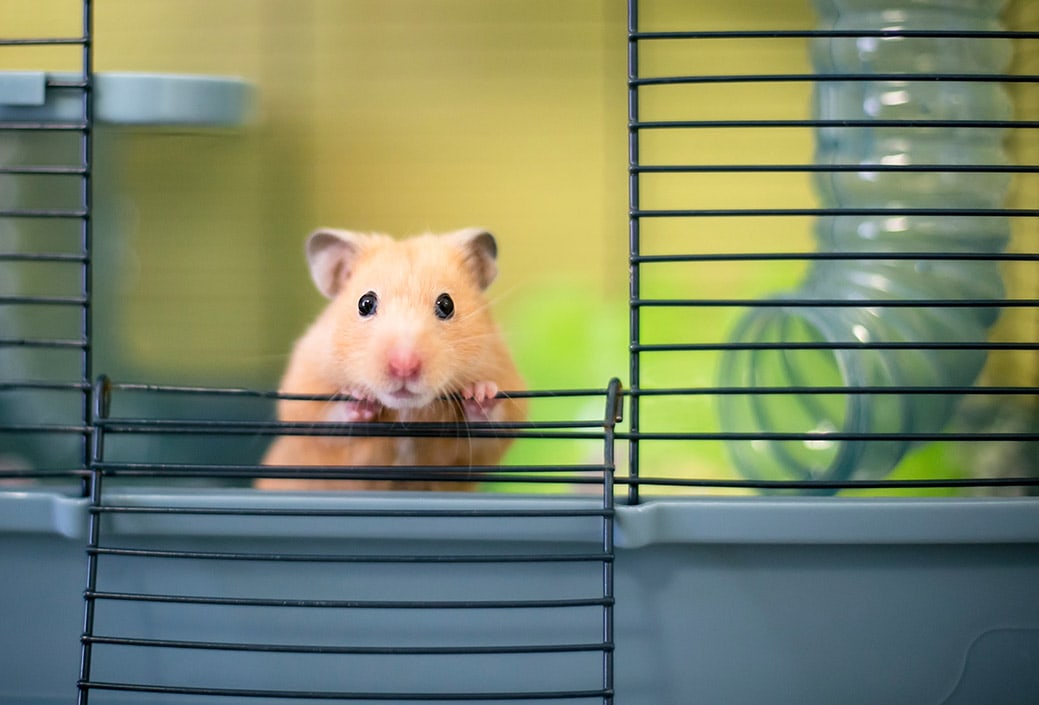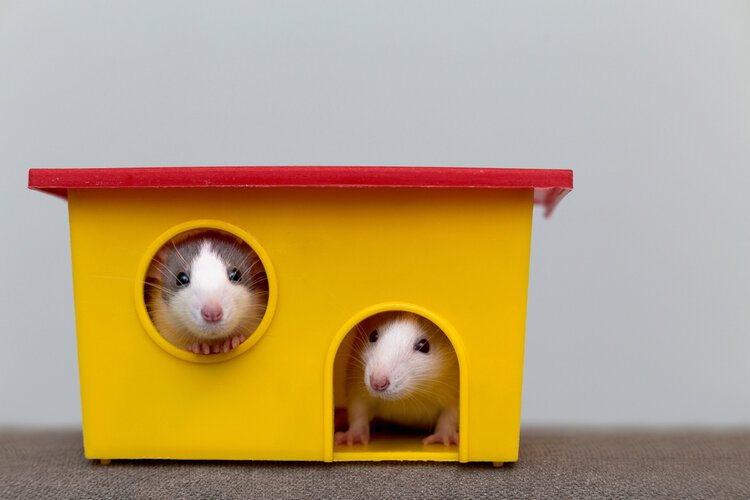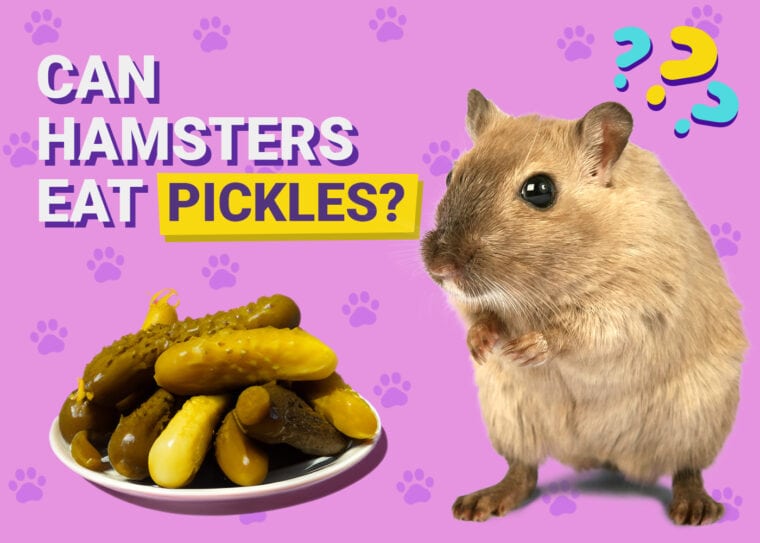
Hamsters are cute pets that love to stuff their cheeks full of anything that they can get their little paws on. Owning a hamster means knowing what kind of food they should eat and whether you can give them the occasional treat.
There are a few safe foods for hamsters, but under no circumstances should you ever give them pickles! The spices and vinegar in pickles can be toxic. Here, we disclose why these critters should not eat pickles and what snacks are safe and healthy for your hamster.
A Little About Pickles
Cucumbers are the most common form of pickles, but many different vegetables and fruits can also be pickled, such as asparagus, cherries, ginger, and onions.
Cucumbers can be fermented or unfermented to become pickles. Fermentation is typically done by placing the cucumbers in saltwater or brine and letting them rest for up to 2 weeks.
For unfermented pickles, vinegar is added to the pickling brine, creating that unique tang, in addition to pickling spices.
Most pickles that you pick up at the grocery store are unfermented pickles in a vinegar brine. The cucumbers soak in the brine and spices but retain that satisfying crunch.
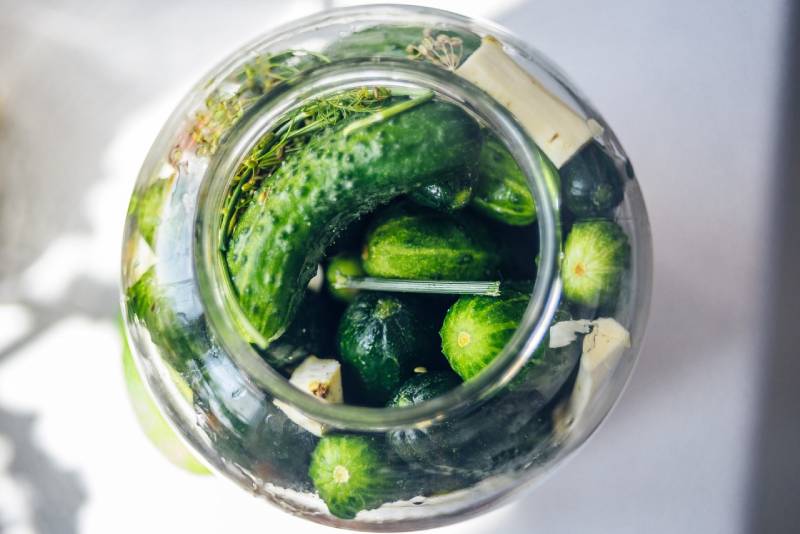
Why Hamsters Shouldn’t Eat Pickles
It’s important to note that one small pickle spear (about 35 grams) contains 283 milligrams of sodium. Even a pickle slice that’s roughly 7 grams contains about 57 milligrams of sodium. Either is a dangerously high amount of salt that has the potential to kill your hamster! Hamsters are naturally very reluctant to ingest NaCl (sodium chloride).1
Dehydration
Eating something with too much salt can lead to dehydration,2 which can quickly lead to death in a small animal like a hamster.
The best test for dehydration is the skin tenting test. Grab some of your hamster’s skin from between the shoulder blades (the skin is looser here) with your fingers, pinching it gently together.
When you release the skin, if it immediately springs back, your hamster isn’t likely dehydrated. But if it takes a moment to resume its normal position, your hamster is dehydrated.
If you suspect that they are mildly dehydrated, supply them with clean and fresh water, and let them drink as much as possible. But if they are severely dehydrated or aren’t drinking enough water, you need to take them to the vet, where your hamster will be rehydrated with IV fluids.
Diarrhea
Vinegar is highly acidic, with a pH of 2–3, which is a little more acidic than lemon juice. This type of acidity can wreak havoc on a hamster’s gastrointestinal tract and cause diarrhea.3
In turn, diarrhea can quickly cause dehydration, so this is a case of getting your hamster to a vet straight away.
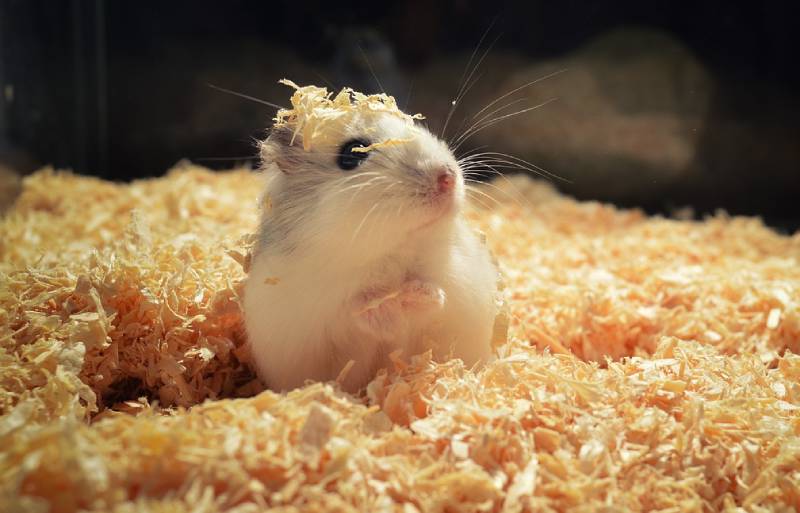
Are Cucumbers Safe for Hamsters?
Absolutely! But like any snack food that isn’t a staple part of a hamster’s diet, cucumbers should be eaten in moderation.
How Much Is Okay?
About 90% of a hamster’s diet should be made up of hay and hamster food. The last 10% is for treats, which can include little bits of cucumbers.
One hamster can have about 1 teaspoon’s worth of cucumber, but if you have a small or dwarf hamster, you should aim for about 1/2 a teaspoon of cucumber.
You should only give cucumbers to your hamster once a week and never two days in a row.
Preparing Cucumber for Your Hamster
Start by washing the cucumber as thoroughly as possible to remove any pesticides and bacteria. If you have a picky hamster, you might want to peel it, but it isn’t necessary.
The seeds are slippery and can make a mess, so you might want to remove them, but as with the skin, it isn’t a required step. Cut the cucumber into small bite-sized chunks or thin slices.
Be sure to remove any uneaten cucumber from your hamster’s cage a few hours after serving it. This way, it won’t have a chance to rot and for bacteria to colonise.
Foods to Avoid for Hamsters
As a hamster owner, you should be familiar with the foods that are good for your hamster and the ones that you should never feed them.
Speak to your vet if you’re unsure what to feed your hamster and what human foods you should avoid.

Safe Snacks for Hamsters
Food for a pet hamster should be similar to what they eat in the wild. Hamsters are omnivorous, which means they eat both vegetables and protein, usually in the form of insects.
Safe snacks for your hamster can include the following;
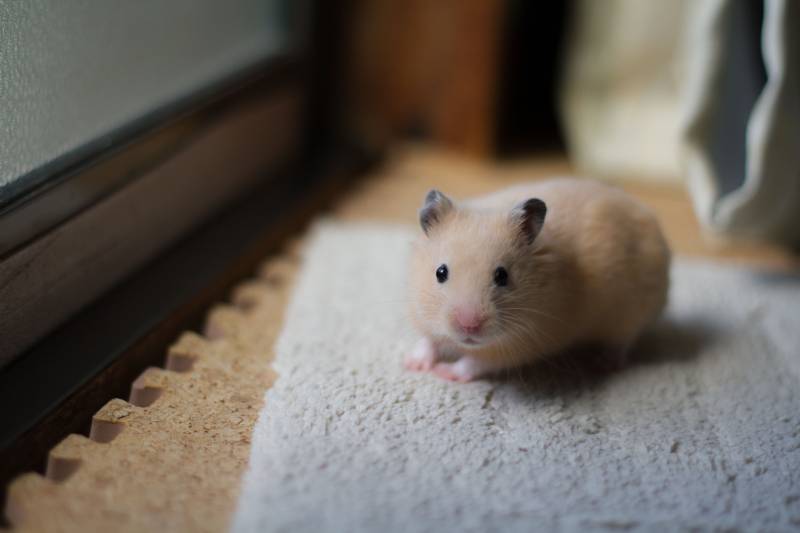
The Best Diet for Hamsters
The best diet for hamsters will make up 90% of what they eat every day, and treats should only make up 10% of their diet.
Provide them with constant access to fresh and clean water in a water bottle with a stainless-steel nozzle. Change the water every day to keep it fresh.
Final Thoughts
While cucumbers are good for hamsters, pickles are bad! Some of the spices in pickles are harmful, but the real damage is done by the immense amount of salt and the intense acidity of the vinegar. Any acidic food won’t be good for your hamster.
Consult your vet if you’re ever unsure about what’s healthy and what’s not healthy for your hamster. Only give treats in moderation. The better you take care of your hamster, the better quality of life they will have.
See Also:
Featured Image Credit: PhotoMIX-Company, Pixabay



